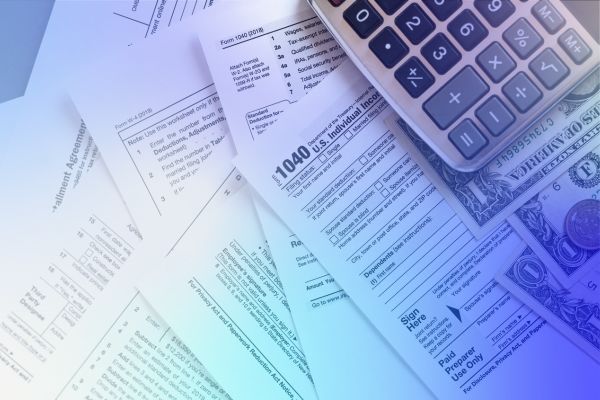
What Happens If You Ignore an IRS Levy Notice (and How AI Tools Can Help You Act Fast)
When an envelope from the IRS shows up marked “Final Notice — Intent to Levy,” it’s not just another letter.
It’s a ticking clock.
If you ignore it, the IRS can legally seize your wages, bank accounts, and even your property to collect what’s owed. But here’s the good news: with AI-powered tools, acting fast doesn’t have to mean panicking. You can decode, assess, and respond before the IRS takes a single cent.
What an IRS Levy Notice Really Means
A levy is the IRS’s most aggressive collection action — it’s the act of taking your money or property to pay back taxes.
This is different from a lien, which is just a claim against your assets.
Before the IRS can levy, they must send you a Notice of Intent to Levy and Notice of Your Right to a Hearing.
You usually have 30 days to respond before they move forward.
A levy can target:
Your bank accounts
Your wages or retirement income
Social Security or federal payments
Or, in extreme cases, your physical property
Ignoring it means the IRS proceeds automatically — their systems are built to do that.
What Happens If You Do Nothing
Here’s the typical chain of events:
The IRS sends an initial bill for unpaid taxes.
Then come reminder letters (CP501, CP503).
Next: a Final Notice (LT11 or Letter 1058) — your last chance to act.
After 30 days, if there’s no response, the IRS can start levying your wages or accounts.
If you ignore the levy notice:
Your bank account can be frozen. The bank must hold funds for 21 days before sending them to the IRS.
Your paycheck can be garnished. The IRS contacts your employer directly.
Your assets can be seized. Cars, real estate, or business property — all fair game once you’ve ignored the notice.
And even if you eventually pay, undoing a levy takes time and paperwork.
Ignoring it doesn’t make it go away — it just hands the IRS control.
Why Acting Fast Matters (and Where AI Comes In)
A levy notice triggers a 30-day countdown.
That’s your window to appeal, negotiate, or set up a resolution plan — before money starts moving out of your accounts.
That’s where AI makes a real difference.
Modern tax-resolution tools, like those used by BackTaxAI, help you:
Decode IRS letters instantly. AI scans the notice, identifies its type, and explains what stage you’re in.
Prioritize your risk. Predictive systems can flag whether your case is “high-risk for levy” based on timing and balance.
Automate reminders. Never miss a response window again — AI can track every IRS deadline.
Generate a personalized action plan. Based on your tax transcripts, balance, and income, smart tools outline your best options — payment plan, hardship status, or appeal.
In short: AI doesn’t just make sense of the chaos — it gives you time back when every hour counts.
What You Should Do Right Now
If you’re staring at a levy notice, take these steps — immediately:
Confirm it’s real. Verify the notice number and date on irs.gov.
Don’t delay contact. Call the IRS or log into your online account to confirm the balance and timeline.
Explore your resolution options.
Full payment: Stops the levy fastest.
Installment agreement: Sets up monthly payments.
Offer in Compromise: Settle for less than you owe, if you qualify.
Collection Due Process (CDP) hearing: File Form 12153 within 30 days to pause enforcement.
Use AI-powered help. Upload your notice into BackTaxAI’s system (or another trusted tool) to analyze and outline next steps.
Keep records updated. If your income or hardship status changes, AI tools can flag opportunities for better relief programs.
Remember: doing something — anything — is always better than silence. The system rewards action.
Common Mistakes to Avoid
Ignoring early letters. By the time you get the levy notice, the IRS has already tried multiple times to contact you.
Assuming it’s too late. Even after a levy starts, you can often stop or reverse it with the right steps.
Relying on guesswork. Each IRS notice type triggers a different timeline — AI tools ensure you’re working with facts, not fear.
Forgetting follow-through. Once you’re back in good standing, keep monitoring your account for new activity.
How BackTaxAI Helps You Stay Ahead
At BackTaxAI, our mission is simple: Learn. Resolve. Save.
We use AI to help you:
Interpret IRS letters in seconds.
Predict next steps in the IRS collection process.
Identify smarter, faster resolution options tailored to your tax profile.
Stay one step ahead of levies, liens, and audits with proactive alerts.
You don’t need to be a tax expert — you just need the right tools and timing.
Key Takeaway
Ignoring an IRS levy notice isn’t just risky — it’s costly.
But technology has changed the game.
AI-powered tools now help taxpayers decode, respond, and resolve their back-tax problems faster than ever before.
If you’ve received a levy notice or suspect one is coming, don’t wait for your account to freeze.
Take control — and let smart tools guide your next move.
BackTaxAI helps you Learn, Resolve, and Save — faster, smarter, and with confidence.


